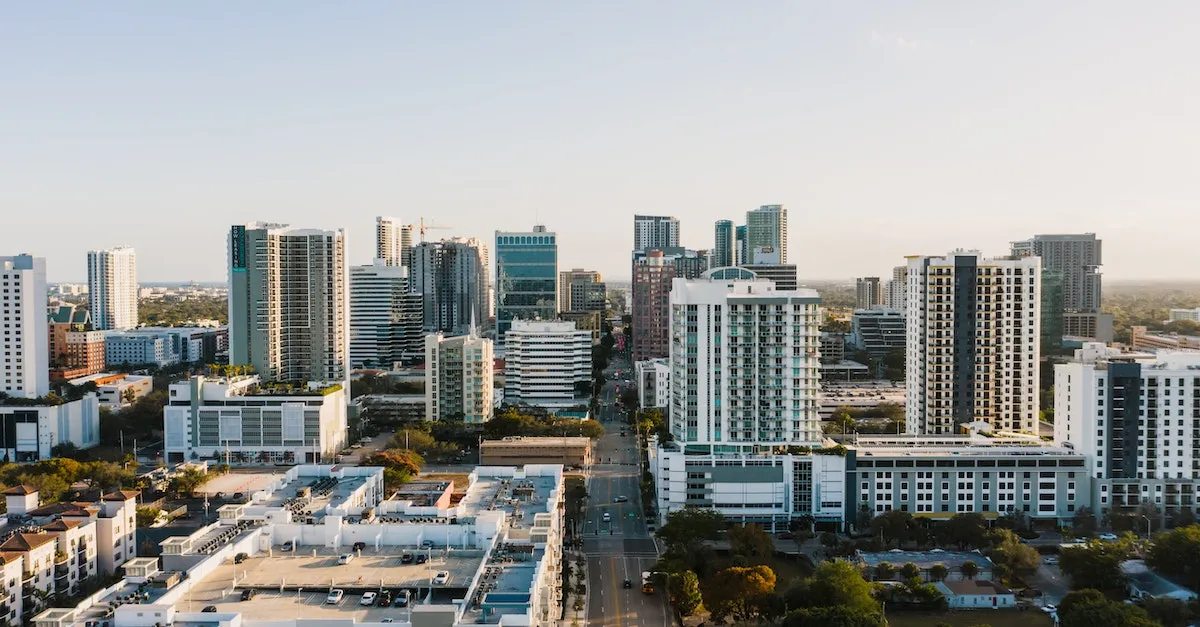I Moved To Florida And I Hate It: Why You Might Regret Relocating To The Sunshine State
Moving to Florida is often seen as an idealistic dream for many – endless sunshine, palm trees, and picturesque beaches. However, the reality doesn’t always live up to expectations. If you’ve recently relocated to Florida and find yourself second-guessing your decision, you’re not alone.
In this comprehensive guide, we’ll explore the most common reasons people end up disliking life in Florida after moving there. From the sweltering heat to invasive wildlife, high costs of living, and more, you’ll get an honest look at the downsides of living in the Sunshine State. Read on to learn why you might regret moving to Florida.
The Heat and Humidity Are Unbearable
Florida is famous for its sunny weather and warm climate, but for some people, the heat and humidity can be overwhelming. Here are a few reasons why you might find it difficult to cope with the weather in the Sunshine State.
Scorching Temperatures Year-Round
One of the first things you’ll notice when you move to Florida is the consistently high temperatures. The state experiences hot weather throughout the year, with summer temperatures often reaching into the 90s and even 100s.
This can make it challenging to engage in outdoor activities or simply enjoy the outdoors without feeling uncomfortable.
According to the National Oceanic and Atmospheric Administration (NOAA), Florida has one of the highest average annual temperatures in the United States. The combination of heat and humidity can make it feel like you’re living in a sauna.
Intolerable Humidity Levels
Florida’s humidity levels are notoriously high, especially during the summer months. The humidity can make the air feel heavy and stifling, making it difficult to breathe and causing excessive sweating.
The constant moisture in the air can also lead to mold and mildew growth in homes and other buildings.
The humidity in Florida is a result of its geographical location, surrounded by bodies of water on three sides. The warm ocean currents and frequent rain showers contribute to the high moisture content in the air. This can be a significant adjustment for those who are used to drier climates.
Heat Index Makes It Feel Even Hotter
The heat index is a measure of how hot it feels when you factor in both temperature and humidity. In Florida, the heat index can often be much higher than the actual temperature, making it feel even hotter than it already is.
The combination of high temperatures, humidity, and heat index can be taxing on the body, leading to fatigue, dehydration, and heat-related illnesses.
It’s important to take precautions when dealing with the heat and humidity in Florida. Staying hydrated, wearing light and breathable clothing, and seeking shade or air-conditioned spaces can help make the weather more bearable.
While Florida offers beautiful beaches and a vibrant lifestyle, the heat and humidity can be a challenging aspect of living in the Sunshine State. It’s essential to consider your tolerance for high temperatures and humidity levels before making the decision to relocate.
Higher Cost of Living Than Expected
One of the biggest surprises for many people who move to Florida is the higher cost of living compared to their previous location. While Florida is known for its sunshine and beautiful beaches, it also comes with a price tag that can catch newcomers off guard.
Housing Costs Are Skyrocketing
One of the main contributors to the higher cost of living in Florida is the skyrocketing housing costs. As more people flock to the Sunshine State, demand for housing has increased, driving up prices. According to a report from Florida Realtors, the median sales price for homes in Florida increased by X% in the first half of 2022.
This means that finding an affordable home in Florida can be a challenge, especially in popular areas like Miami or Orlando.
High Homeowner’s Insurance Rates
Another factor that contributes to the higher cost of living in Florida is the high homeowner’s insurance rates. Due to the state’s susceptibility to hurricanes and other natural disasters, insurance companies charge higher premiums to mitigate their risks.
According to a study by ValuePenguin, the average annual homeowner’s insurance premium in Florida is X% higher than the national average. This can put a significant dent in your budget and add to the overall cost of living in the state.
State Income Tax Savings Don’t Always Balance Out Increased Costs
While it’s true that Florida doesn’t have a state income tax, it doesn’t necessarily mean that you’ll save money overall. The higher cost of housing, insurance, and other expenses can offset the savings from not paying state income tax.
It’s important to carefully consider all the costs associated with living in Florida before making the decision to relocate. Creating a budget and factoring in all the expenses can help you determine if the move is financially feasible for you.
Dealing with Hurricanes and Severe Weather
When it comes to dealing with hurricanes and severe weather, living in Florida can present some unique challenges. The state is known for its beautiful beaches and sunny weather, but it is also prone to hurricanes due to its location in the Atlantic hurricane basin.
Therefore, if you’re considering relocating to the Sunshine State, it’s important to understand the potential risks and drawbacks associated with living in an area prone to severe weather.
Florida Hurricane Season Lasts Half the Year
One of the main concerns for residents of Florida is the length of the hurricane season. Unlike other states that may only experience a few months of hurricane activity, Florida’s hurricane season typically lasts from June 1st to November 30th.
That’s nearly half of the year during which residents need to be prepared for potential storms and the associated risks. It’s important to note that while not every year brings a major hurricane, it only takes one to cause significant damage and disruption.
Storm Preparation and Damage Can Be Costly
Preparing for a hurricane can be an expensive endeavor. From stocking up on non-perishable food and water to purchasing supplies such as plywood and generators, the costs can quickly add up. Additionally, homeowners in Florida are often required to have hurricane insurance, which can be more expensive than standard homeowners insurance due to the increased risk of damage.
In the event of a major storm, the cost of repairs and rebuilding can be substantial, especially if a property is not adequately insured.
According to the National Hurricane Center, the average cost of a hurricane in the United States is around $28 billion. This includes both property damage and economic losses. Florida, being one of the states most affected by hurricanes, bears a significant portion of this cost.
Therefore, it’s important to consider the financial implications of living in an area prone to severe weather before making the decision to relocate.
Power Outages Are Frequent After Big Storms
One of the inconveniences that often accompanies severe weather in Florida is power outages. Strong winds, heavy rain, and downed trees can cause widespread damage to power lines, resulting in extended periods without electricity.
While utility companies typically work quickly to restore power, it’s not uncommon for residents to be without electricity for several days or even weeks following a major storm.
During this time, basic amenities such as air conditioning, refrigeration, and access to electronic devices may be unavailable. This can be particularly challenging in the hot and humid climate of Florida.
It’s important to have a plan in place for such situations, including alternative sources of power or temporary relocation options.
It’s crucial to be well-informed and prepared when living in an area prone to hurricanes and severe weather. Understanding the length of the hurricane season, the potential costs associated with storm preparation and damage, and the likelihood of power outages can help you make an informed decision about whether relocating to Florida is the right choice for you.
Invasive Plants, Bugs, and Wildlife
One of the challenges that residents in Florida often face is dealing with invasive plants, bugs, and wildlife. The warm and humid climate of the Sunshine State provides a perfect breeding ground for various species that can be bothersome and sometimes even dangerous.
Roaches and Palmetto Bugs
Florida is home to several species of roaches and palmetto bugs, which can be particularly unsettling for many people. These insects are known for their ability to survive in almost any environment and can be found both indoors and outdoors.
While they are generally harmless, their presence can be quite unpleasant and difficult to get rid of.
According to the University of Florida, more than 70 species of roaches can be found in the state. These pests can enter homes through small cracks and crevices, and once inside, they can rapidly multiply.
Taking preventive measures such as sealing any entry points and keeping a clean living environment can help minimize the risk of infestation.
Fire Ants and Mosquitoes
Another nuisance that Floridians often encounter are fire ants and mosquitoes. Fire ants are known for their painful stings, and their colonies can be found in yards, parks, and other outdoor spaces. Mosquitoes, on the other hand, are not only annoying but can also transmit diseases such as West Nile virus and Zika virus.
According to the Florida Department of Health, Florida has the highest number of reported mosquito-borne disease cases in the United States. To protect themselves from these pests, residents often have to take precautions such as using mosquito repellent, wearing long sleeves and pants, and eliminating standing water where mosquitoes breed.
Alligators, Snakes, and More
Florida’s diverse ecosystem is also home to a variety of wildlife, including alligators, snakes, and other potentially dangerous creatures. While encounters with these animals are relatively rare, it is important to be cautious and aware of their presence.
According to the Florida Fish and Wildlife Conservation Commission, Florida is home to over 1.3 million alligators. Alligators are typically found in freshwater habitats such as lakes, rivers, and swamps.
Snakes, including venomous species like the Eastern diamondback rattlesnake and the cottonmouth, can also be found in certain areas of the state.
It is crucial to exercise caution when venturing into their natural habitats and to avoid provoking or approaching these animals. Understanding their behavior, respecting their space, and following safety guidelines can help minimize the risk of negative encounters.
While Florida’s diverse flora and fauna can be intriguing for nature enthusiasts, some people may find the presence of invasive plants, bugs, and wildlife to be a downside of living in the Sunshine State.
Being prepared and taking necessary precautions can help residents navigate these challenges and enjoy all that Florida has to offer.
Traffic and Overpopulation Challenges
Congestion and Long Commute Times
One of the biggest challenges that residents of Florida face is the heavy traffic and long commute times. With a growing population and a high number of tourists, the roads can become congested, especially during peak travel times.
Rush hour traffic in major cities like Miami and Orlando can be frustrating and time-consuming, causing stress and delays for commuters.
According to a study conducted by the Texas A&M Transportation Institute, Florida ranks among the top states with the worst traffic congestion. The study found that the average commuter in Florida spends an extra 54 hours per year stuck in traffic.
This statistic highlights the significant impact that traffic congestion has on the daily lives of Floridians.
Overcrowded Beaches and Attractions
Florida is known for its beautiful beaches and popular attractions, but these tourist hotspots can also become overcrowded, especially during peak seasons. Visitors from all over the world flock to Florida’s beaches, theme parks, and other attractions, resulting in large crowds and long wait times.
For instance, during spring break, popular beach destinations like Miami Beach and Daytona Beach can become packed with college students looking to enjoy the sun and party. The influx of visitors can make it difficult for residents to find a peaceful spot on the beach or enjoy their favorite local attractions without dealing with large crowds.
Urban Sprawl and Loss of Undeveloped Land
Florida’s rapid population growth has led to urban sprawl and the loss of undeveloped land. The demand for housing and commercial spaces has resulted in the expansion of cities and towns, encroaching on previously untouched natural areas.
According to the Florida Department of Environmental Protection, the state loses an estimated 175,000 acres of natural and agricultural land each year due to development. This loss of undeveloped land not only affects the state’s biodiversity but also contributes to the loss of green spaces and natural habitats.
Furthermore, urban sprawl can lead to increased pollution, strain on infrastructure, and decreased quality of life for residents. As more land is developed, the natural beauty and charm of Florida can be diminished, leaving some residents disheartened by the changing landscape.
While Florida offers many advantages, it’s important to consider the challenges that come with living in the Sunshine State. Traffic congestion, overcrowded beaches, and urban sprawl are just a few of the issues that residents may face.
It’s essential to weigh the pros and cons before making a decision to relocate to Florida, ensuring that it aligns with your lifestyle preferences and priorities.
Conclusion
Moving to Florida can certainly seem like a tropical dream come true. However, the realities of living there – from sweltering heat to natural disasters, invasive pests, high costs, and overpopulation – may not match up with the sunny visions that lured you there initially.
If you recently relocated to Florida but find yourself having second thoughts, know that it’s normal to struggle adjusting to such a major life change. Give yourself time to truly experience the pros and cons of Florida living before deciding if it’s the right fit long-term. With an open mind, you may still be able to make it work in your new home state.








